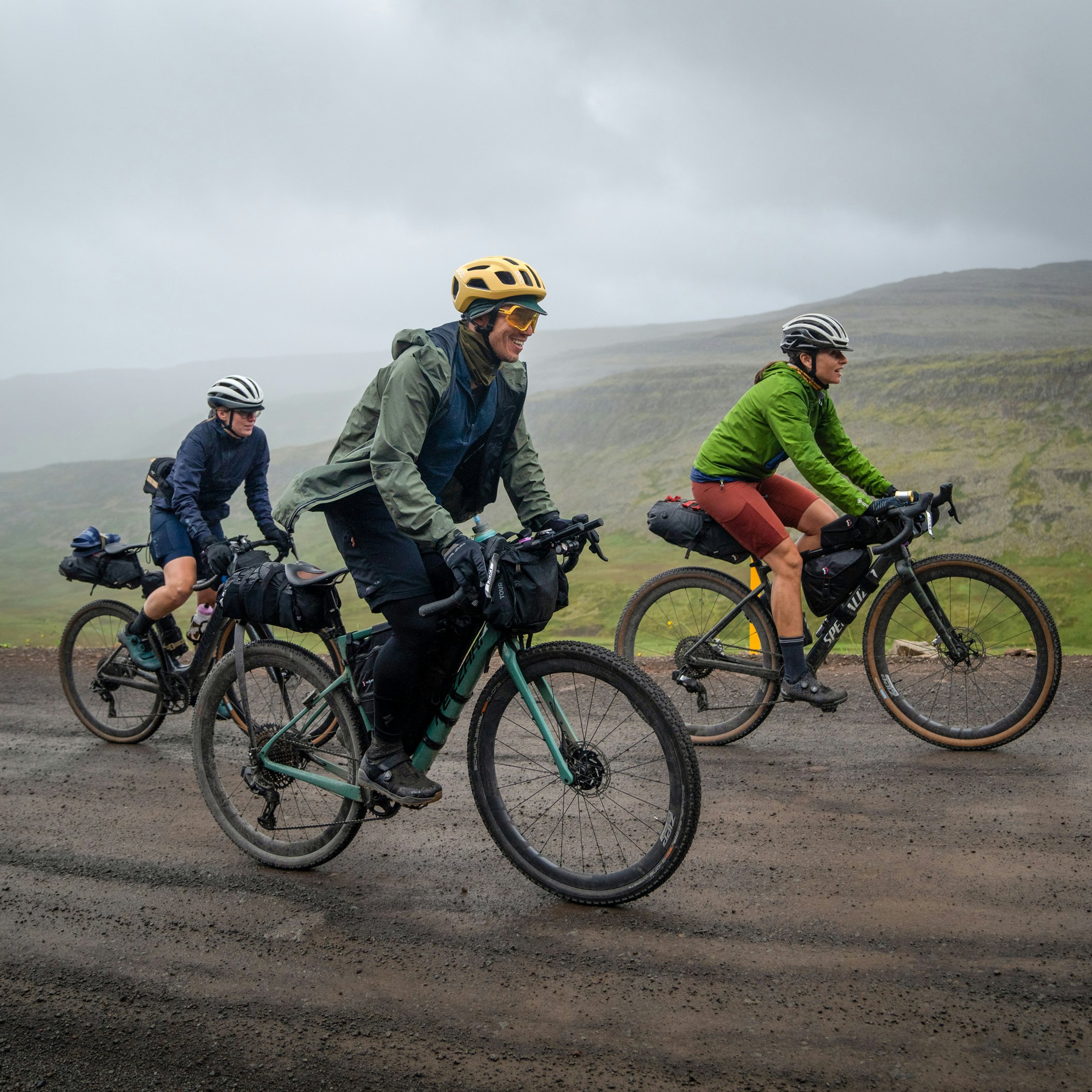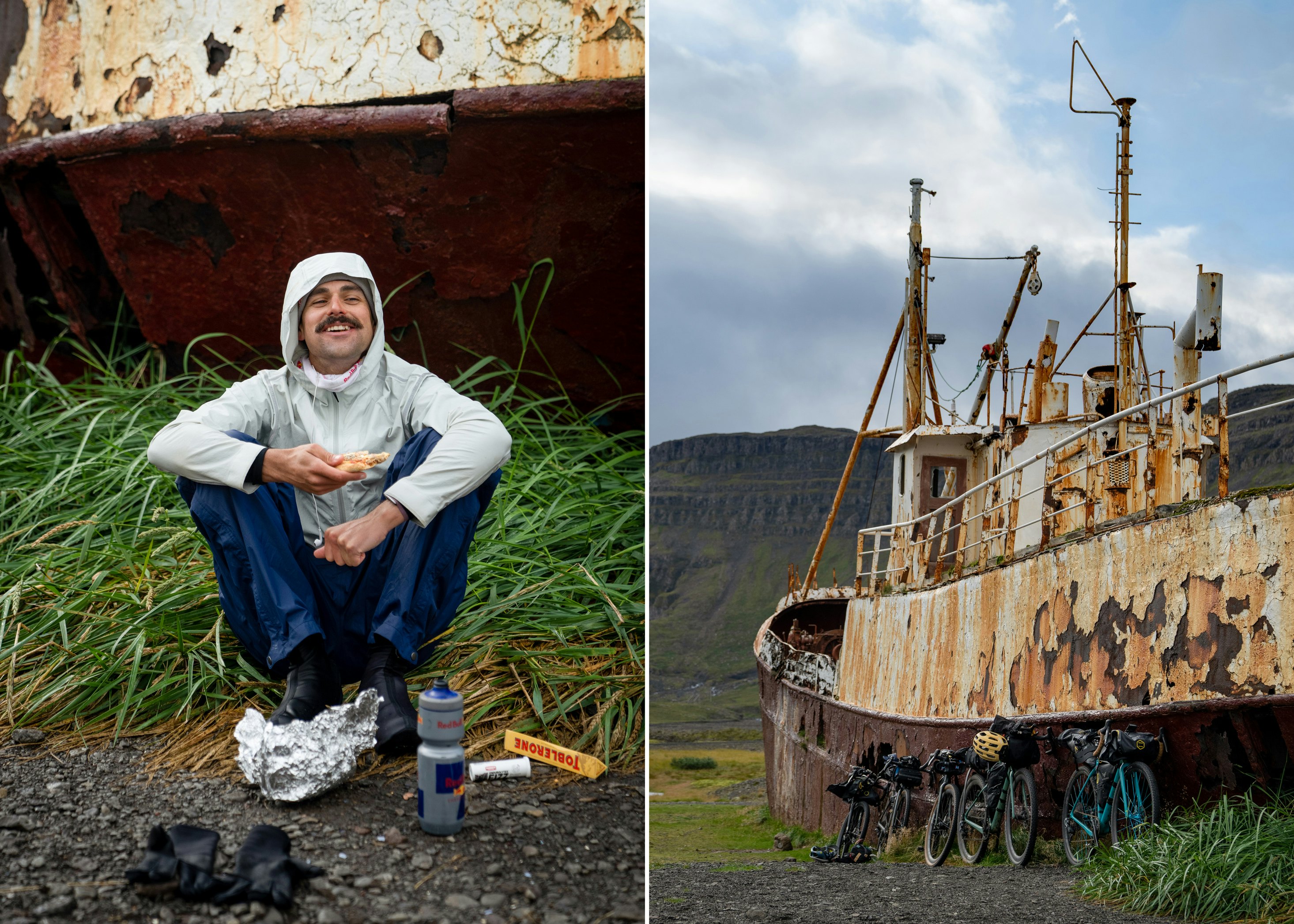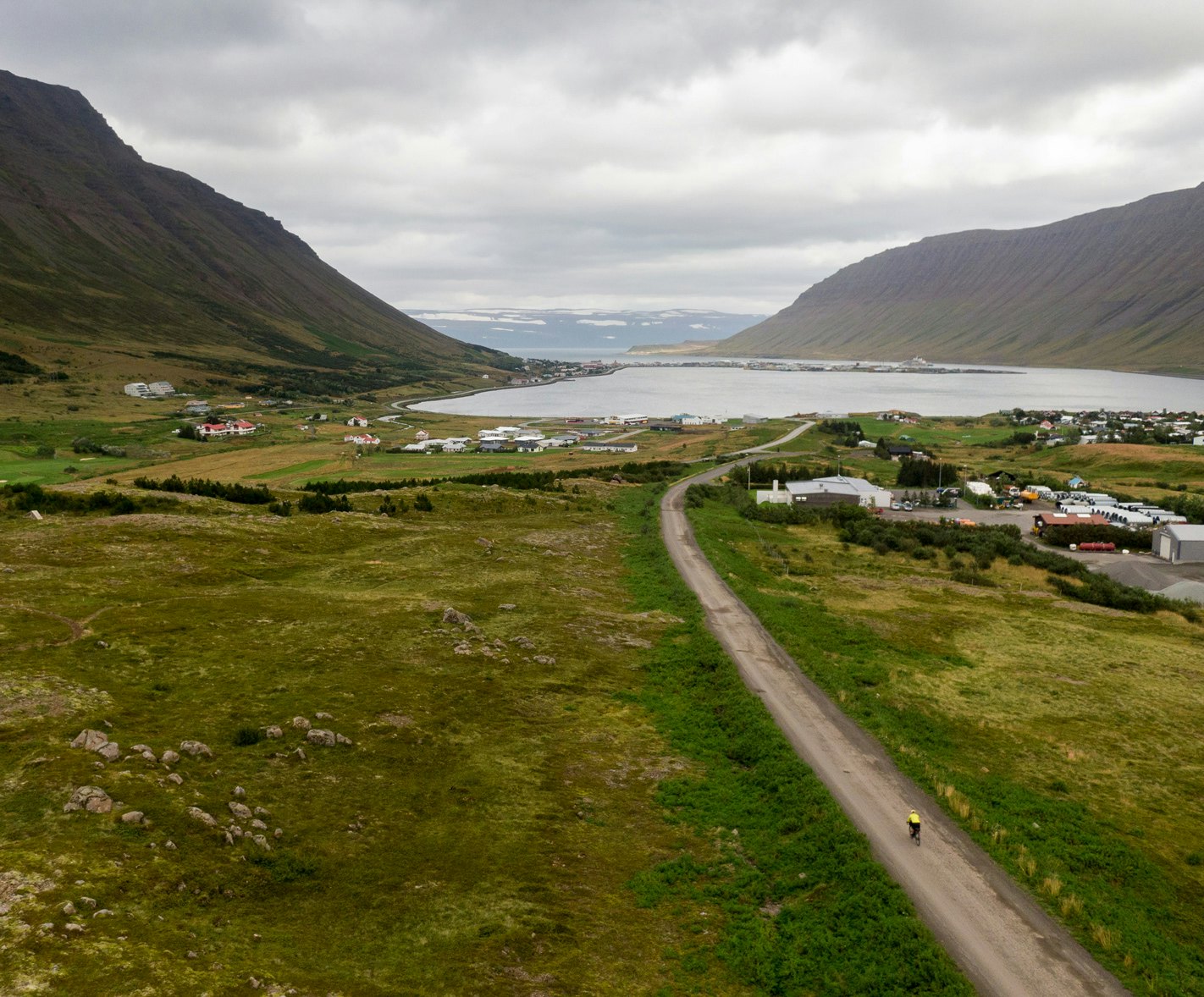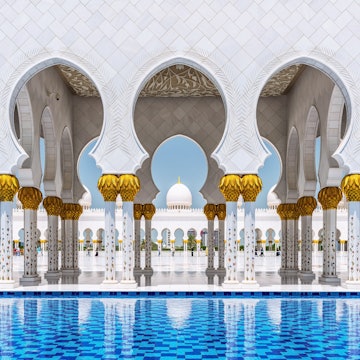
In Iceland’s remote Westfjords region, a new bicycle route takes shape

Dec 10, 2021 • 9 min read

The Westfjords Way combines stretches of empty roads and isolated gravel trails © Evan Ruderman
A group of cyclists led by photographer Chris Burkard have mapped out a 575-mile bikepacking route through a breathtaking region that’s often missed by the many tourists who come to Iceland every year.
Fierce winds, freezing rain, and hours of heart-in-your-throat, quads-aflame climbing over steep mountain passes. If that doesn’t sound like a good time to you then you must have a different definition of fun than a group of cyclists who, over the course of eight days this past September, mapped out a new bikepacking route through the Westfjords, one of the most remote regions of Iceland.

Led by photographer and adventurer Chris Burkard, the expedition team also included ultra-endurance cyclist Lael Wilcox, photographer and videographer Rugile Kaladyte, mountain biker and podcaster Payson McElveen, and mountain biker and anatomist Nichole Baker. The goal was to chart out a viable multi-day bike touring route based on a 600-mile road trip loop, starting in the town of Ísafjörður. Tracing the edge of vast fjords, climbing across emerald-green mountain passes, and hopping between natural hot springs, the Westfjords Way is a new way to see a seldom visited region of a heavily visited land; “a lonely shamrock at the end of the country,” as Burkard described it. We caught up with some of the expedition team shortly after their trip to learn more about the journey and their hopes for the Westfjords Way as tourism slowly reopens.

The interview has been edited for clarity and length.
Lonely Planet: How did the idea for this route come about and how did the group come together?
Chris Burkard: This specific route was something that was in the back of my mind for a while: people have ridden sections of it and done iterations of it. The Westfjords are a place with more hot springs and less people than anywhere in the country. There are very few tourists. There are days where you’ll ride 80 miles and you won’t see a car. It’s littered with waterfalls and gravel roads. It just seemed like a bike touring or bikepacking mecca. My opinion is just my opinion though, so in order to legitimize it, I wanted to bring along people who really know their stuff and who have traveled the world.

LP: For the rest of the crew, how did you end up in the group and what were your initial thoughts on joining in on this adventure?
Lael Wilcox: I mean what a huge opportunity. I’d never been to Iceland before and all of a sudden I’m going to be part of scouting a 1100-km route? What a cool way to see the country. Every trip I go on, I want to do it on my bike. To have someone put so much thought and care into a route... It’s like following a treasure map to see a place.
Nichole Baker: This was my first real gravel bike tour and obviously the crew is super accomplished. I was definitely nervous about the fitness aspect of it, but I couldn’t say no to the opportunity to see Iceland in the way we’d see it. It was the trip of a lifetime and I was honored.
Payson McElveen: It’s rare when you build something up in your mind to be especially magical and then it exceeds your expectations. But it does happen now and then. I’ve always known that learning a place by bike is pretty much my favorite thing to do, so I knew that part was going to be incredible. But ultimately, actually seeing the place was completely mind-boggling.

LP: Let’s talk about the weather. From what I gathered, you had some tough conditions to deal with and I hear Day Three was especially rough.
LW: Day Three was tough, but it ended with joy. We had been riding into a super strong wind for something like 80 miles. And then we had finally turned a different direction where we got a tailwind and it was on a dirt road that was really wet and loose and I got dirt all over my face, but that was the joyful part because we were riding with the wind and it felt so good.
PM: The hardest weather moments were immediately followed by the most beautiful, special weather moments. So you would have these crazy, high-powered rain storms roll through and then you would just be immediately rewarded with a triple rainbow and the most ridiculous sunset that we’d ever seen – plus a ripping tailwind.

LP: You are all serious riders who don’t blink at 100-mile days. What would you say to a cyclist in average shape? Could they do this route too?
LW: A lot comes down to budgeting your time. We had really big days and sometimes that was to get from service to service, so we could restock on food and water. But there were usually a few spots in between where you could have found shelter or where you could have carried extra food. We also stayed indoors every night. Camping would be a challenge because it’s so windy. The riding itself isn’t very technical. You do need a level of fitness for it: there was a bit of climbing, but really nothing too hard. It should be attainable for anyone who wants to do it. It’s just about having a plan and knowing where you can find food, water, shelter. And give yourself a little grace on what you can expect to accomplish every day. Because the elements are much less predictable than on a bike tour anywhere else.
LP: One of you was on an e-bike, right? Could that be an option for folks worried about all the miles?
Rugile Kaladyte: I was on a gravel e-bike, which is a good option. I like to shoot photos from a bike — to be there in the moment when the light changes — so an e-bike made that a lot easier. I’d recommend renting an e-bike there instead of bringing your own. Mine is still stuck at Zurich airport because of rules around flying with batteries.

LP: While tourist numbers are relatively low due to Covid-19, Iceland is generally a place that has sadly become synonymous with overtourism. Did you notice those pressures at all? What was the reception from locals like?
PM: Nichole and I spent a little bit of time being more traditional tourists at the end of our trip. We went to see the volcano erupting and some of the other more popular attractions. And it was pretty staggering: just the sheer number of people at those locations. I’d like to think a trip like the one we did would inspire others to get a little bit off those well-worn paths and distribute some of that tourism pressure a little bit.
CB: Having this be some of the group’s first Iceland experience was really special and I wish more people had that instead of everyone going to the same places. A big part of creating solutions for overtourism is showing people what’s out there and advocating for getting off the map. Not just romanticizing the idea of going down empty dirt roads, but actually doing it
And a bike, especially, is disarming. It really does slow you down. You experience more. You have a more intimate connection with that place because the terrain is rough and the wind is in your face and you smell the air. All your senses are engaged, versus rolling up your window and just driving.



LP: But that remoteness might scare some people.
CB: There’s a barrier of entry. But that shouldn’t deter people; it should make people excited at the fact that they’re going to experience something really raw. And look, it doesn’t have to be extreme. We hope that people might come out and do a few day rides. Or maybe some tour operators could move in and offer support for much smaller A-to-B segments.



LP: We’ve talked a lot about the hardships and rough days. I heard Day Seven [a 101-mile stretch in the region’s western reaches] was among the best? Can you talk about that?
CB: Day Seven might have been my single funnest day on the bike of all time. It wasn’t particularly crazy challenging. But just the way it started, the way it ended, the terrain... It was perfect. We were on gravel for like 85% of the day. Truly stunning scenery. Barely any services. Also, the weather was good, so maybe that was a part of it.
RK: Just having good weather makes such a difference. You could linger outside at the end of the day a little more, you could hike up to a waterfall. To be out in the sun all day, it doesn’t feel like there’s as much of a sense of urgency.
PM: Most of the time, a single route is planned around one waterfall or one landmark or one section of road, but that day, they just came every 5 to 10 miles and it was mind-boggling. There was a crescendo effect. By the end it was like, “this has transcended bike touring; it is now a spiritual experience.”


LP: How did it feel to finish? Any departing thoughts?
LW: It felt amazing to finish. It was a hard ride with hard conditions in one of the most beautiful places I’ve ever ridden. We had a bit of a welcoming group waiting when we arrived and it felt like jumping in the harbor was the only appropriate way to finish it off.
CB: The Westfjords are magic. They really are. It’s a mysterious section of a mysterious country. And it’s deemed remote, even by Icelanders' standards which is saying a lot. I’m excited for people to experience it and for people to experience bikes in Iceland in general.
More information on the Westfjords Way bike touring route, including maps, is available at Bikepacking.com.
Westfjords, Iceland is on our 2022 Best in Travel list. For more stories from some of the world’s most exciting destinations click here.
Safety recommendations and restrictions during a pandemic can change rapidly. Lonely Planet recommends that travelers always check with local authorities for up-to-date guidance before traveling during Covid-19.
You might also like:
On Québec’s Route Verte, not knowing what I was getting myself into was the best part
A mountain biker shares how Nordic Europe combines the best of food and biking
Why the Westfjords are the place to escape the crowds in Iceland















